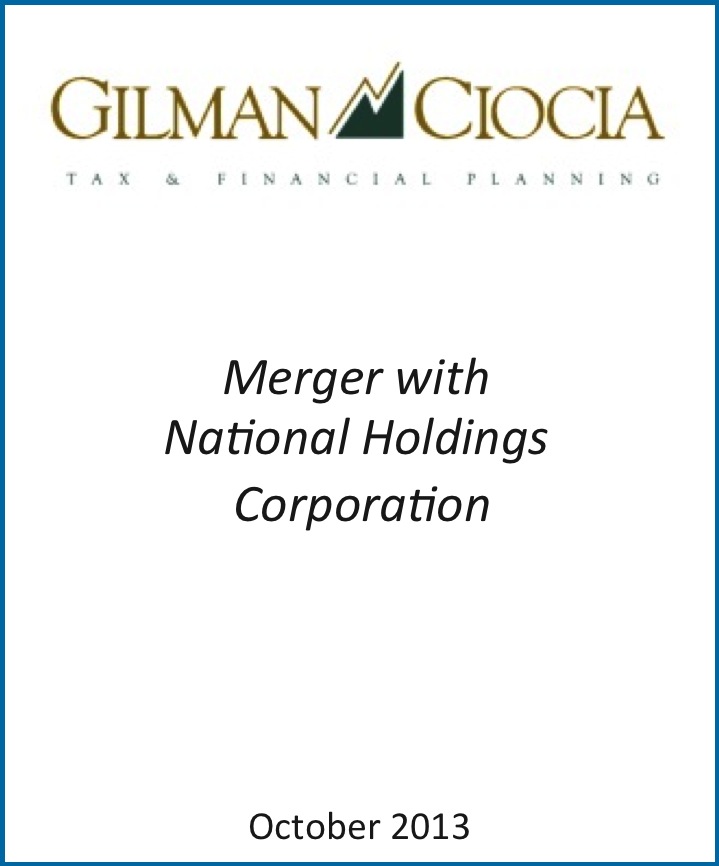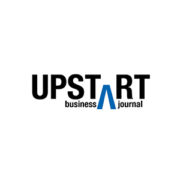Boutique Appeal: Against the backdrop of department store consolidation, retailers and investors seek specialty shops
To view original article click here.
By Allison Collins
November 8, 2013
To protect themselves from fickle consumers and uncertain economic times, retailers are using acquisitions of specialty shops as a form of insurance. Deals such as Gap Inc.’s (NYSE: GAP) $130 million purchase of retail chain Intermix Holdco Inc. in January allow middle-market companies to break into new segments of the market. (For more, see the video below with Hadley Mullin of TSG Consumer Partners.)
Through September, 2013 has been a big year for department store deals, with about $9 billion in deal value according to data from Dealogic and provided by investment bank Robert W. Baird & Co. The year through September has seen nearly $21 billion in total retail M&A activity, which includes department store deals.
The third quarter was especially strong for U.S. retail and consumer transactions, rising 112 percent from the same quarter in the previous year, according to PwC.
“I see more opportunities in the specialty retail space than I do in the department store space,” says Al Ferrara, a partner at BDO USA LLP. Deals are coming from private equity firms that bought a retailer three to five years ago and are looking to exit, or the stores themselves, which may be looking to move into a specialty niche through acquisition, Ferrara says.
Gap’s Intermix purchase underscores that idea. By buying Intermix, a group of clothing stores that sell women’s luxury apparel, the company enters an entirely new space. When Gap made the acquisition, Intermix operated 32 boutiques across North America. Gap says it is seeking to expand the brand’s network of stores and enhance the company’s website. Stores are scheduled to open soon in Chestnut Hill, Mass., Brooklyn, N.Y., and Bellevue, Wash.

“Smart companies are trying to bulletproof themselves by having concepts at different price points and target audiences; therefore, if one should face headwinds, you have the others,” says Jane Hali (pictured), vice president of custom research for London-based trend forecasting agency WGSN Group Inc., about the Intermix deal.
Gap has businesses at all ends of the market. It has Old Navy at the low end; Gap in the middle; Banana Republic in the middle but above Gap; Athleta, which gives them a specialization in a specific market; and Piperlime, a pure e-commerce business. The acquisition of Intermix adds a specialty store, with a very select assortment of clothes, to Gap’s holdings. The deal was Gap’s first since 2008, when it paid $150 million for Athleta, which sells exercise clothes. The company bought Banana Republic in 1983.
In October, rumors swirled that suit chain Men’s Wearhouse Inc. (NYSE: MW) may bid for shoemaker Allen Edmonds Corp. in a move that could strengthen the chain. That news came around the same time that Houston-based Men’s Wearhouse rejected a $2.3 billion takeover offer from Jos. A. Bank Clothiers Inc., which also operates a chain of retail stores. If that deal had not been rejected it would have expanded Jos. A. Bank’s product offerings into tuxedo rental and casual wear. In July 2012, Men’s Wearhouse acquired men’s clothier Joseph Abboud through a $97.5 million deal for its owner, JA Holding Inc.
Specialty retailers have also attracted the interest of private equity firms.
Private Equity Involvement
In October, London-based private equity firm Permira Funds agreed to buy the parent company of Dr Martens, R Griggs Group Ltd., for about $486 million. Dr Martens makes apparel, shoes and accessories sold in 63 countries. Permira has also invested in Hugo Boss AG and Valentino.
Private equity firm Apax Partners closed a $1.1 billion deal for apparel chain Rue21 Inc. in a take-private transaction in October. Apax, headquartered in New York and London, has a history of investing in retail companies. In November 2012, the firm paid $570 million to buy Cole Haan from Nike Inc. (NYSE: NKE). Before that, the firm invested in Takko, a value fashion retailer in Europe in 2011, and Spyder Active Sports Inc., which makes performance wear, in 2004. Apax also invested in Phillips-Van Heusen Corp. in 2003 and Tommy Hilfiger Corp. in 2006, and has exited both investments.
In April, New York private equity firm Kohlberg Kravis Roberts & Co. LP (NYSE: KKR) announced the purchase of a majority stake in Paris-based SMCP Group, a clothing retailer. SMCP’s brands include Sandro, Sandro Men, Maje and Claudie Pierlot. SMCP had opened 69 stores in North America during the 18 months before that sale was announced.
New York private equity firm Sycamore Partners said it would buy Hot Topic Inc. for about $600 million in March. Hot Topic is a mall and web-based retailer that sells music and pop-culture influenced apparel, accessories, music and gifts. The company also owns Torrid, which sells clothing for women size 12 and up, and Blackheart, which sells lingerie and beauty products. Sycamore is also invested in apparel chain Talbots.
In January, Boston private equity firm TA Associates completed a majority investment in Dutch LLC, which is the parent company for fashion lines Joie, Equipment and Current/Elliot. Those brands are sold in high-end department stores, including Saks, Nordstrom, Neiman Marcus and Barney’s.
TA, which acquired a 60 percent stake in the company, plans to focus on building out retail locations for the companies and developing an e-commerce site for Current/Elliot, TA Associates principal James Hart tells Mergers & Acquisitions in an interview.
In December 2012, Los Angeles private equity firm Leonard Green & Partners LP bought a 25 percent stake in the Topshop apparel chain from British billionaire Philip Green for $805 million. Leonard Green also co-owns J. Crew. The firm had previously invested in David’s Bridal, but sold the chain to Clayton Dubilier & Rice in October 2012 for $1.05 billion.
“Specialty retailers are able to appeal to a very specific segment of the market that broader generalists are finding it more difficult to appeal to,” says Maud Brown, a managing director at Bahrain private equity firm Investcorp, which owns retailers Sur La Table and Paper Source. Investcorp also owns SourceMedia, Mergers & Acquisitions’ publisher.
“The department store model has been challenged for many years. Various department stores have tried to reinvent themselves, but the brands – be they specialty retailers or brands themselves – are trying to get a direct relationship with their end customer,” Brown says.
Many brands that are sold through department stores have opened brick-and-mortar locations. A significant portion of those companies have both wholesale and retail models, so they still work with and sell their products in department stores, as well as in their own locations, Hali says.
“The only way for the manufacturers to have full distribution is really to open their own stores, and that is what many of them are doing,” Hali says.
Peter Millar, a high-end men’s apparel line, has opened two stores and has plans for more.
The company, which aims to outfit 35- to 50-year old men for the office, weekend, golf course and tailgate, recently opened a store in South Hampton, N.Y., and another location in Palm Beach, Fla. Peter Millar is sold in Neiman Marcus and Nordstrom stores, as well as through smaller retailers.
“I suspect in the next 18 months we’ll have four more locations,” says CEO Scott Mahoney. For Peter Millar, the retail locations are a chance to express and market the essence of the brand. The company is considering locations in New York, Chicago, Charleston, Austin, Dallas and other places, but “it’s not going to be a 50-store play,” Mahoney says.
This is not the first time we have seen this phenomenon. In the 1990s, when the outdoor apparel space exploded, North Face, which makes outdoor performance-wear, began opening stores, says Robert W. Baird & Co. managing director Joe Pellegrini (pictured).
 “They can control their own destiny better when they have their own store,” says James Cassel, chairman of Miami investment bank Cassel Salpeter & Co., but that does not mean they will pull out of the larger stores.
“They can control their own destiny better when they have their own store,” says James Cassel, chairman of Miami investment bank Cassel Salpeter & Co., but that does not mean they will pull out of the larger stores.
E-commerce gives brands another way to increase customer awareness, which can generally help sales. “Department stores like the idea that their brands have full online businesses — it makes the brands more important to the customer and top-of-mind,” says Hali.
Brands are seeing a higher percentage of revenue that comes from more than just department store sales, according to Pellegrini. “Having a well-positioned website only raises the awareness level of the brands,” Pellegrini says. “They’re seeing a higher percentage of their revenues being derived from an omnichannel approach, which includes direct sales and online.”
For middle market brands, experts agree that increased size could help companies work more easily with large department store conglomerates.
In October, Hanes Brands Inc. acquired Iselin, N.J.-based Maidenform Brands Inc. for $583 million. The deal gave Hanes ownership of Maidenform, Flexees, Lilyette, Self Expressions and Sweet Nothings, adding to the brands it already owned: Playtex, Bali, Just My Size, Hanes, Barely There, Wonderbra, Champion and L’eggs.
“They have more leverage” with department stores, Hali says, since they are larger as a combined company. That deal also resulted in production synergies, as Hanes owns many manufacturing facilities. Before the deal, Maidenform had been using a third-party manufacturer.
PVH Corp. (NYSE: PVH) also gained leverage with stores when it bought Warnaco Group Inc. In that deal, which closed in February, the company picked up the rest of the jeans and underwear portions of Calvin Klein (it already owned the rest), as well as Speedo, Body Nancy Ganz/Bodyslimmers, Warner’s and Olga. PVH also owns the Tommy Hilfiger, Van Heusen, Izod and Arrow lines.
Aside from PVH, several brand owners have scooped up more companies to increase their portfolios.
In September, Paris-based clothing and accessories company Kering bought a minority stake in luxury brand Altuzarra, which is sold at Barney’s, on Net-a-Porter.com, Bergdorf Goodman and other stores. Kering develops apparel and accessories for luxury and lifestyle brands, including Gucci, Bottega Veneta, Saint Laurent, Alexander McQueen, McQ, Balenciaga, Brioni, Christopher Kane, Stella McCartney, Sergio Rossi, Boucheron, Girard-Perregaux, JeanRichard, Qeelin, Puma, Volcom, Cobra, Electric and Tretorn. The company was known as Pinault-Printemps-Redoute or PPR until June, when it changed its name to Kering.
In August, Authentic Brands Group LLP, which is backed by private equity firm Leonard Green, picked up Spyder Active Sports Inc. for an undisclosed amount. The Boulder, Colo.-based ski and snow outfitter sells jackets, snow pants and cold-weather accessories. Spyder was added to Authentic Brands’ portfolio, which already included brands Judith Leiber, Andrienne Vittadini and Viking.
In July, LVMH Moet Hennessey Louis Vuitton SA said it would buy Italian cashmere company Loro Piana SpA for about $2.6 billion, following the company’s 2011 deal for Bulgari SpA. The Loro Piana purchase expands LVMH’s depth in the luxury goods segment, where it already owned Louis Vuitton, Celine, Kenzo, Marc Jacobs, Emilio Pucci, Thomas Pink and others.
In February, Iconix Brand Group Inc. (Nasdaq: ICON), which owns Ed Hardy, Rocawear and Candie’s, bought London denim label Lee Cooper for $72 million. Also that month, Iconix said it would buy sportswear and denim label Buffalo David Bitton from Buffalo International LLC for $76.5 million in cash. Those deals follow a November 2012 acquisition of soccer-related product manufacturer Umbro, which Iconix bought from Nike Inc. (NYSE: NKE) for $225 million. New York-based Iconix licenses clothing brands to retailers and manufacturers.
Vida Shoes International Inc., a New York footwear brand owner, acquired Andre Assous Co., an Oceanside, N.Y.-based footwear company known for espadrilles in January. Vida licenses shoes for Baby Phat, Carter’s, Osh Kosh, Esprit, Sag Harbor South Pole and Unionbay and other companies.
Department Store Consolidation
Middle market companies and brands face increased pressure from department stores as consolidation continues.
In November, Hudson’s Bay Co. closed a $2.9 billion deal for Saks Inc. That deal brought together Hudson’s Bay’s namesake stores in Canada, Home Outfitters, which is a home goods store; Lord & Taylor, a department store that sells apparel, home good and small appliances; and Saks and Saks Off 5th, the chain’s group of outlet stores.
“There is going to be more pressure from the larger retail conglomerates for there are fewer stores for the brands to sell to,” says Hali.
In addition to the Saks deal, Neiman Marcus Inc. changed hands.
Ares Management LLC and Canada Pension Plan Investment Board bought luxury retailer Neiman Marcus for about $6 billion in October. Neiman owns high-end retailer Bergdorf Goodman.
Neiman, a Dallas-based chain, was last purchased by TPG Capital and Warburg Pincus in a 2005 leveraged buyout. The private equity firms filed paperwork with the U.S. Securities and Exchange Commission for an initial public offering in June, but ultimately decided to sell instead. TPG and
Warburg Pincus reportedly paid about $1.2 billion for the department store in 2005.
In a previous wave of department store mergers, we saw Macy’s Inc. (NYSE: M), then known as Federated Department Stores (after R.H. Macy & Co. agreed to a merger in 1994), merge in 2005 with the May Department Stores Co., owner of Filene’s, the Jones Store, Kaufmann’s and other stores, to create a combined company with more than 1,000 stores.
In 2006, the company sold Lord & Taylor to Purchase, N.Y.-based private equity firm NRDC Equity Partners LLC, which owned Hudson’s Bay. Macy’s owns luxury retailer Bloomingdales.
With so few department stores, it is unlikely that we will see further consolidation in the space, experts say, but potential targets could include Dillard’s, and possibly J.C. Penney Co. Inc. (NYSE: JCP).
Large department store deals can make it difficult for smaller brands to get into the stores, according to Baird’s Pellegrini.
“They are going to be far pickier and demanding of the vendors,” Pellegrini says of large department stores.
As retailers grow larger and more sophisticated, they tend to want to work with fewer vendors, and with those that have a similar level of infrastructure sophistication.
“There are a lot of young up-and-coming companies with great brands and products, but to service a large base of department stores, making sure the right inventory is on the shelf is difficult,” says Pellegrini.
What happens first when you integrate an acquisition is vendor rationalization: “The more you buy from certain vendors, the higher the discount,” says Cynthia Cohen (pictured), CEO of Strategic Mind share, a consulting firm for retailers. Cohen is also on the board of directors at apparel chain Bebe. If department stores consolidated buying, it could lead to some of the clothing lines being dropped, Cohen says.
“If they consolidated buying, that gives the stores more power, but department stores and good brands understand they are partners and they both need to be in business. One can’t put the other out of business. It’s sort of like shooting themselves in the head,” says Cassel.













